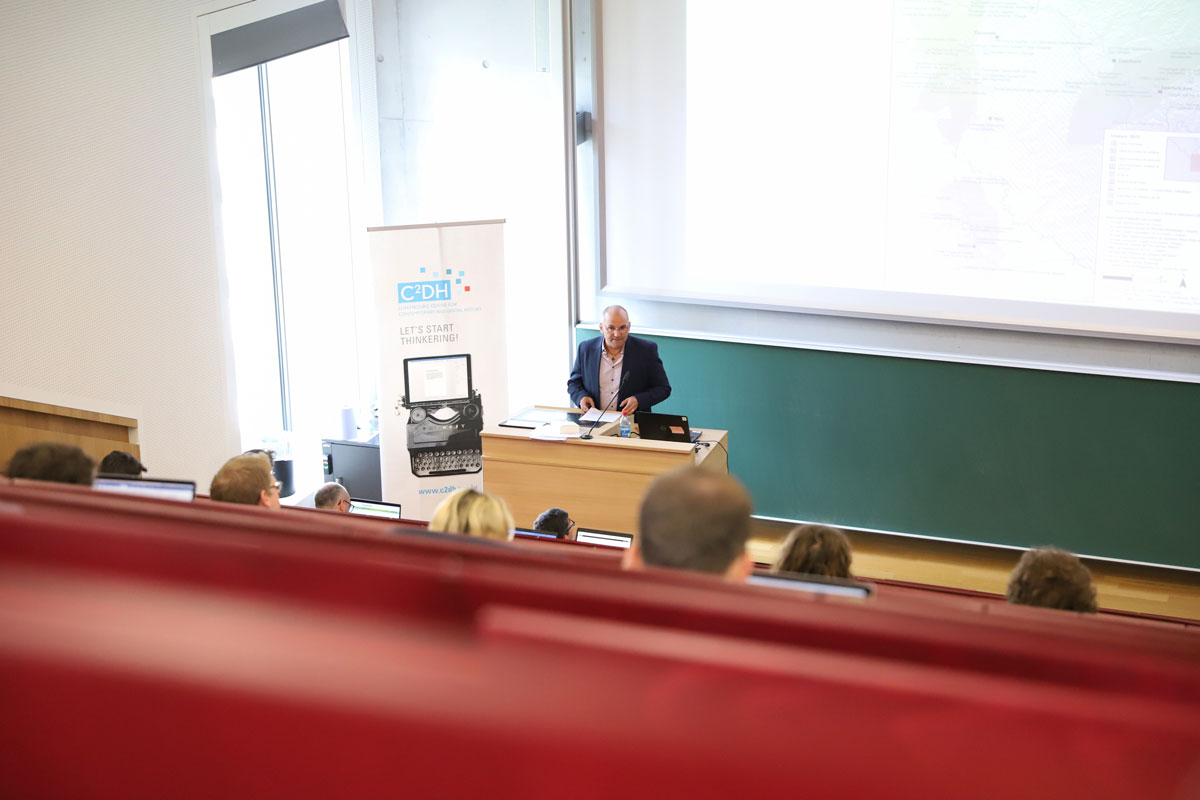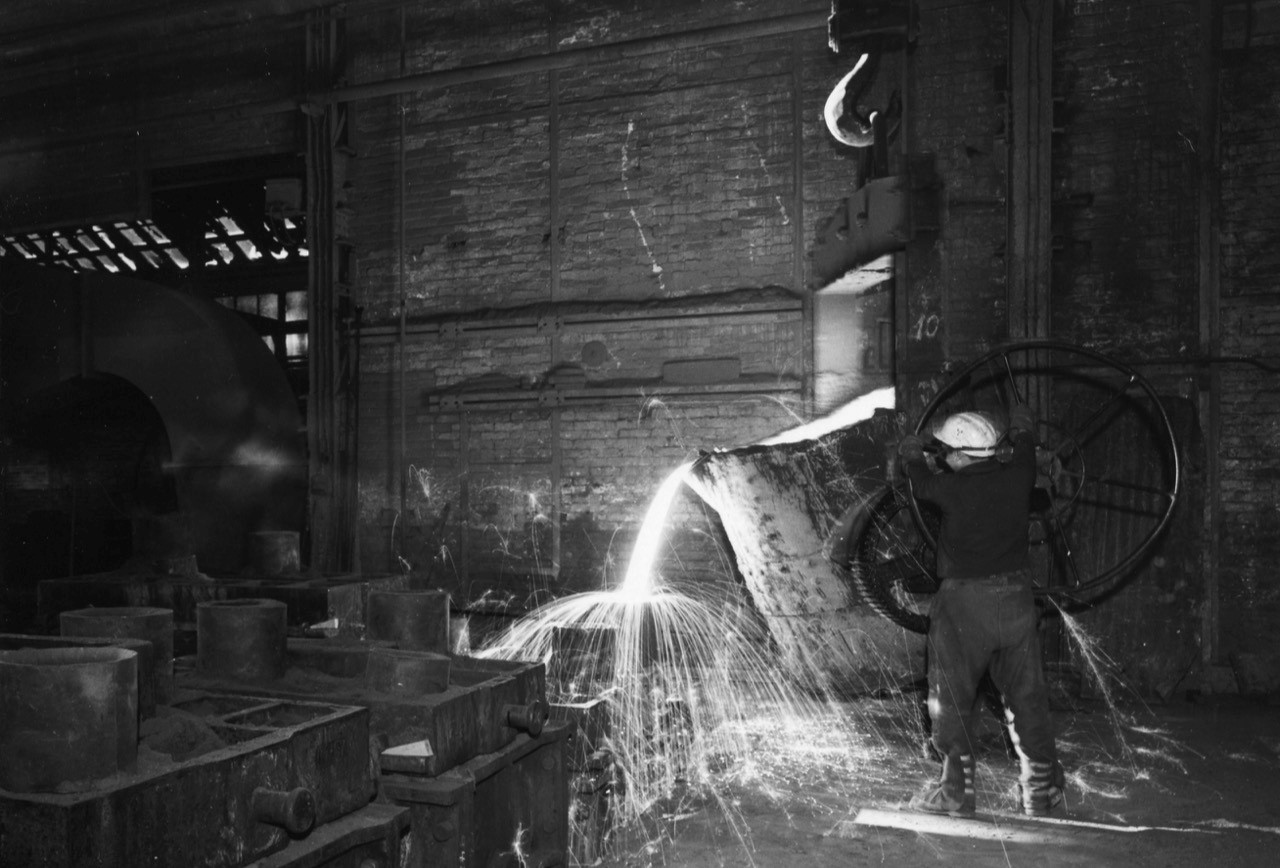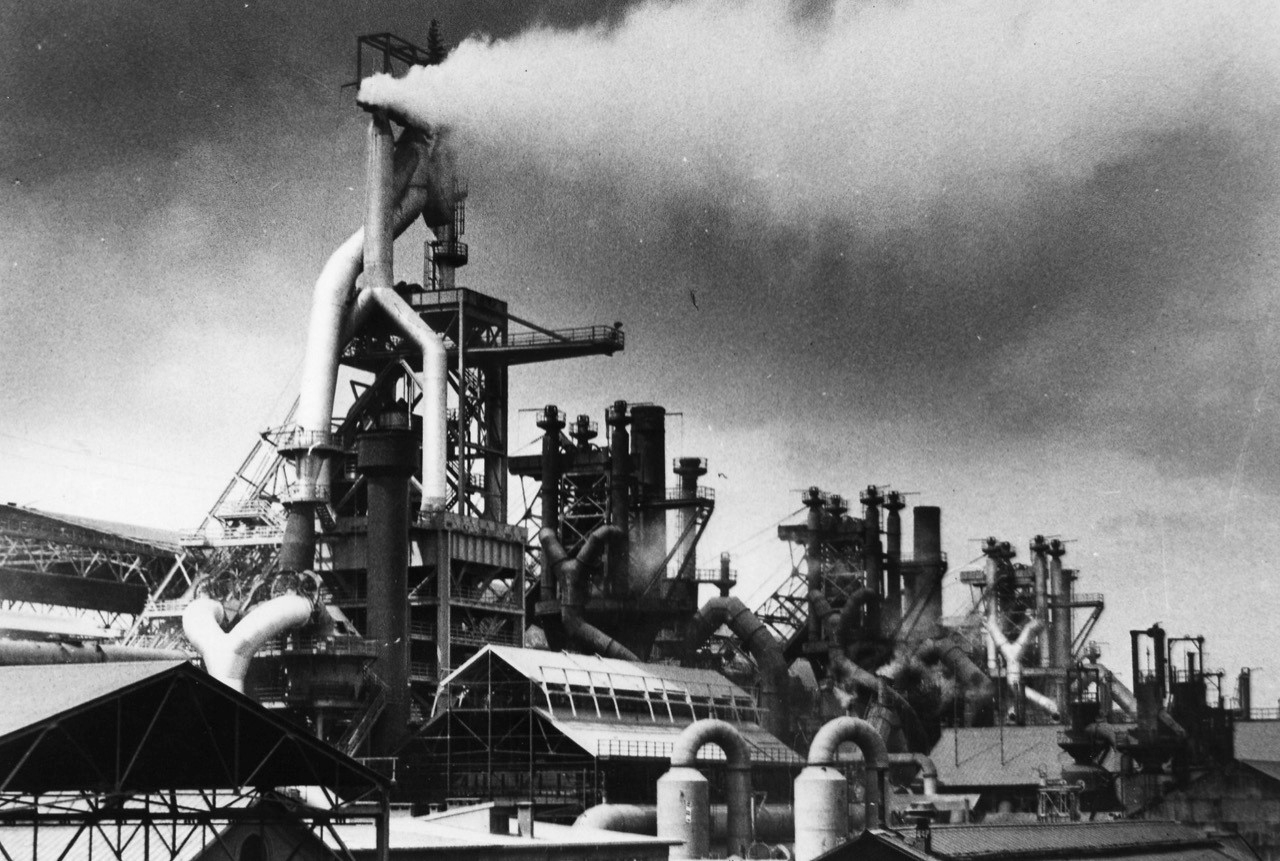Thu 23 August 2022
This report was first published on H-Soz-u-Kult.
On 9 and 10 June 2022, the C²DH hosted an international conference on the history of industrial regions.
This international conference addressed the continuous and complex transformation of European industrial regions, specifically their rise, demise, and major post-industrial developments from the 1870s to the 1970s and beyond. The focus was on four main topics: the housing situation of workers and their families, the decline of mining regions, the socio-political resistance of industrial workers, and the journalistic and visual representations of industry. The conference also included a summarised and contextualized presentation of the research project “Remixing Industrial Pasts in the Digital Age”, funded by the European Capital of Culture Esch2022 and carried out at the Luxembourg Centre for Contemporary and Digital History (C²DH).
In his keynote lecture entitled “From Boom to Bust to Re-Boom”, DENIS SCUTO (Luxembourg) offered a broad historical outline of the development of Luxembourg “from steel mills to fintech”, i.e., Luxembourg’s transition from the steel industry to the financial industry, which has in the meantime become the economic basis of the country. The lecture effectively connected the transformations in the 20th century to Luxembourg’s population growth and (international and cross-border) migration, concluding with the topic of international interdependence of politics, industrial corporations and organisations.

The first section dealt with different forms of housing and developments in the housing situation for industrial workers using regional case studies.
ULRICH SCHILDBERG (Bochum) focused his contribution on company towns taking as an example the Norwegian mining region of Longyearbyen on the Arctic archipelago of Svalbard/Spitsbergen. He borrowed Lucie Morrisset’s definition of these towns as “mono-industrialised communities created by a company with a view to housing the workers of an industry that dominates the local economy”. These housing complexes were typically founded and operated in remote areas in connection with the exploitation of natural resources and production without industrial cluster formation or production chains. Such settlements are limited in size, lack infrastructure and fully depend on the vitality of industry.
ZDENĔK NEBŘENSKÝ (Prague) used a comparative approach to analyse state- and municipal-initiated housing policies in three industrial regions from the second half of the 19th century to the 1970s. With state support, the companies in the Broumov region in north-eastern Bohemia built workers’ settlements and social facilities on the outskirts of the city or in neighbouring villages. The example of Langenbielau in Lower Silesia (Prussia) shows how an economic crisis in the 1860s led government initiatives to build housing for poor weavers in the textile industry. In the Russian village of Żyrardów (Mazovia), entrepreneurs were obliged to provide housing for workers on factory premises and to meet state quality standards.
DANIEL RICHTER (Luxembourg) presented his micro-historical approach to several streets inhabited by industrial workers in Esch-sur-Alzette at the beginning of the 20th century. In his study, he analysed the topographical location of the streets and neighbourhoods within the town, their origin, ownership and use, population development and structure, the occupational activity of the inhabitants, social and health conditions, and the mentality and identity of the inhabitants. Despite several phases of new construction, housing in Esch during the highly industrial phase between 1870 and 1950 could not keep pace with the enormous population growth, which over a longer period of time led to a precarious and crisis-ridden housing situation for the lower strata of industrial workers.
BEATA PIECHA-VAN SCHAGEN (Chorzów) also presented a micro-study with her remarks on the miners’ colony of the Upper Silesian Borsig on the outskirts of Zabrze in the late 19th century. This workers’ colony, founded in 1868 by Albert Borsig (1829-1878), had 63 houses and was located right next to the mining area. The presentation focused on the cultural and religious relations of the Protestant and Catholic industrial workers. The overall analysis of individual places of settlement, churches, cemeteries, nurseries and parks, together with the activities of different associations, was supported by a wealth of visual material and showed the confessional and social relations of the approximately 2,700 residents in the context of the Prussian state and entrepreneurial activity.
This session offered various perspectives on industrial areas during periods of deindustrialisation. The speakers reflected on sensory, temporal and landscape transformations.
LENA FERRIDAY (Bristol and Exeter) addressed the history of industry through the sensory lens. She examined the place of the sensing body in the material environment of the industrial region of Cornwall, UK, from circa the 1850s to the 1910s. Ferriday gave a general overview of the development of the Cornwall industrial region, describing its growth from the 1750s into the 19th century modernization and further decline after the 1870s. In general, workers were portrayed as possessing almost superhuman qualities adapted to the sensory challenges imposed by a harsh environment. Breathing and lung capacity and the endurance of high temperatures by the body were described as arguably the only area of sensitivity with which workers struggled.
In her presentation, LAURA HÖSS (Darmstadt) explained that, despite the general consensus that the decade of 1970s was a critical and transformative time for all industry in Europe, it wasn’t the same for all mining cities. For instance, there were considerable differences between Western European cities and cities that were under the Soviet sphere of influence. Despite broad generalizations about the decade of 1970s, Leipzig reportedly showed a different temporality in its transformation during this time period. While in many places the mines and steel industry began to decline in the 1970s, in the GDR their lifespan was artificially prolonged, with the structural change delayed by subsidizing outdated industries.
MAXIME DERIAN (Luxembourg) proposed an account of landscape transformation during the industrial decline in the south of Luxembourg. First, DERIAN presented the case of “nature to industry” transformation by giving the example of Mondercange slag heap in Luxembourg. The slag heap is reportedly a contemporary example of industrial “wastescape”, which poses questions about the industrial waste management and raises environmental concerns. DERIAN further discussed the “industry to nature” case showing the present-day Haard nature reserve (near Rumelange) and the abandoned mines that now make up its landscape. He compared such “rewritten” landscapes to a palimpsest.

The third section was devoted to political and social movements and conflicts in industrial regions, using case studies from Luxembourg and Portugal.
IRENE PORTAS (Luxembourg) examined the communist perspective on the steel crisis in the Minett region during the 1930s. The cross-border activities of communists and the trade unions they dominated were based on the ideological view that the crisis was deliberately triggered by growing monopolies and rationalisation in the steel sector in order to maximise profits. Alongside fundamental criticism, the communist trade union opposition demanded a political action programme that included reduced working hours, general wage increases and a minimum wage, social protection in the event of unemployment, and equal pay for men, women and young people.
JULIA HARNONCOURT (Luxembourg) addressed the question of whether petty crime and spontaneous protests in the Minett region after the First World War can be described as forms of resistance. The riots in Esch-sur-Alzette in November 1918, during which around 6,000 people looted individual shops, were triggered by resentment against a baker who sold small cakes to American soldiers at inflated prices, which led to spontaneous rioting and looting in the city. Mass protests and theft could be motivated by class relations, hardship and political beliefs and could be directed against the owners of the stolen goods or against laws and symbols of state power or social discipline.
MIGUEL ÁNGEL PÉREZ SUÁREZ (Lisbon) looked at the social and political self-management of workers in the 1970s in the industrial region on the south bank (Margem Sul) of the Tagus River in Greater Lisbon, a stronghold of the Portuguese Communist Party. He focused on developments at the Mundet factory in Seixal, a traditional producer of cork, which was an important component of the Portuguese economy. The workers’ liberation and co-determination in the factory was a direct result of the Carnation Revolution against the authoritarian dictatorship in April 1974. The workers took a lead there, but the chapter was already brought to a close at the end of 1977 when the government returned the company to its former owners.
PAOLO JORGE (Lisbon) spoke about resistance to industrialisation in the city of Almada near Lisbon, characterised by the cork industry and shipbuilding. He focused on the period from 1933 to the revolution of 1974, encompassing the authoritarian regime of the Estado Novo shaped by António de Oliveira Salazar. Repression of workers’ resistance to the regime, organised by communists was exercised not only by political police and the military, but also by loyal municipal authorities. Resistance persisted not only in strikes, clandestine communications and propaganda, but also in communist cells within industrial enterprises and in local workers’, youth and cultural associations. Ideological cohesion and solidarity were strengthened by reading books such as Jorge Amado’s 1954 trilogy of novels “The Bowels of Liberty”.
The last session of the conference was dedicated to different representations of the Minett region and the portrayal of industry through various literary and visual means.
ANNE-MARIE MILLIM (Luxembourg) explored the representations of the Minett region in Batty Weber’s feuilleton series. From 1913 to 1940, the Luxembourgish author and editor Batty Weber produced texts on an almost daily basis for the Abreisskalender (tear-off calendar). MILLIM explored how, through literary means, industry was aestheticised against the backdrop of a seemingly unchanged idyll of villages and nature, where “smoke and dust do not rule the world”. In general, MILLIM focused on three main themes in Batty Weber’s writing: the portrayal of industry as a builder of national identity, as proof of Luxembourg’s ability to compete at an international level, and as a thematic and aesthetic means of expressing artistic modernity.
In his presentation, JENS VAN DE MAELE (Luxembourg) further explored the impressions of Luxembourg’s “technological sublime” and the aesteticisation of industry. The romanticising of industry and the image of harmonious coexistence of industry with nature and people was achieved through the subtle integration of towers and blast furnaces into the landscapes on posters, tourist brochures and photographs. At the same time, however, this discourse of beauty coexisted with an awareness and condemnation of the air pollution permeating the living environments of working people. Despite a general belief that environmental issues became a focus of discussion only in the 1970s, industrial air pollution was identified as a cause for concern in the early 1900s.
VIKTORIA BORETSKA (Luxembourg) analysed representations of the Minett region through photography. “Liewen am Minett”, arguably the first large-scale social documentary photography project, created the conditions and outlet for public debate about the making of the (visual) identity of the Minett industrial region in Luxembourg. Photography became the site of identity negotiation during the times of industrial decline. Photography also troubled the wider public with the questions about its relation to objectivity and the right of owning one’s image. “Liewen am Minett” and the “Action Auto-Portrait” by a new generation of amateur photographers in the local photo club were an invitation for people to see themselves and the Minett without the Minett.

Stefan Krebs (University of Luxembourg): Welcome
Denis Scuto (University of Luxembourg): Keynote “From boom to bust to Re-Boom”: Luxembourg, from steelmills o Fin-Tech
Section 1: Workers’ housing
Chair: Christoph Brüll (University of Luxembourg)
Ulrich Schildberg (Ruhr-Universität Bochum): Development of company towns – Longyearbyen/Svalbard as a case study
Zdeněk Nebřenský (German Historical Institute, Prague): State authorities and workers’ housing policy in Eastern Europe, 1866-1976
Daniel Richter (University of Luxembourg): Micro-studies of worker streets in Esch at the beginning of the 20th century
Beata Piecha-van Schagen (Museum Upper Silesian Ethnographic Park, Chorzów): The Upper Silesian Borsigwerk – cultural and religious interactions in industrialising communities in the late 19th century
Section 2: Mining areas in decline
Chair: Karin Priem (University of Luxembourg / Tübingen)
Lena Ferriday (University of Bristol / University of Exeter): “Mine-beaten miners”? Representing the sensing body in the industrial landscapes of Cornwall, c. 1850-1910
Laura Höss (TU Darmstadt): From bust to boomtown? Post-socialist urban transformation and neoliberal city management in the context of the deindustrialisation of the central German lignite area after the “Wende”: The case of Leipzig 1980-2000
Maxime Derian (University of Luxembourg): The Minett: landscapes of a region in transformation
Section 3: Workers’ resistance
Chair: Valérie Schafer (University of Luxembourg)
Irene Portas (University of Luxembourg): The 1929 Crisis in the Minett from a Communist lens
Julia Harnoncourt (University of Luxembourg): Resistance without identifiable purpose: spontaneous protests and petty crime (from World War I to the 1930s)
Miguel Pérez Suárez (Universidade Nova de Lisboa): When workers liberated themselves and caught their own path: workers revolutionary action in Mundet and Siderurgia in red south bank Lisbon in the 1970s
Paolo Jorge (Universidade Nova de Lisboa): Industrialisation and resistance in Almada during the Estado Novo (1933-1974)
Section 4: Representations of the Minett
Chair: Werner Tschacher (University of Luxembourg)
Anne-Marie Millim (University of Luxembourg): The representation of the Minett region in Batty Weber’s feuilleton series Abreisskalender (1913-1940)
Jens Van de Maele (University of Luxembourg): The Minett: dirty or beautiful? Clashing discourses on environmental pollution and natural beauty, 1920s-1960s
Viktoria Boretska (University of Luxembourg): Photography and identity negotiation in the Minett during the industrial decline of the 1980s